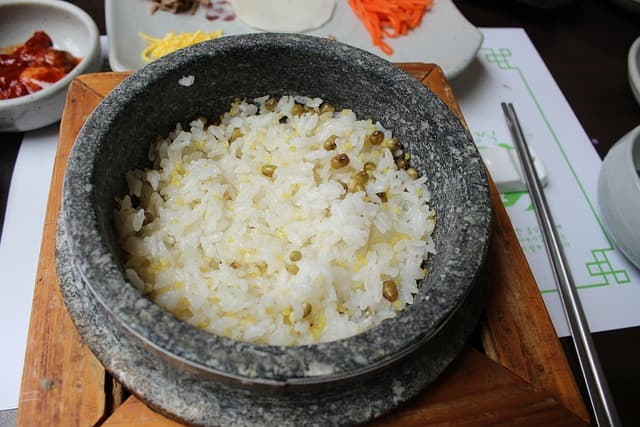Korean Meals Are All About Sharing
한국 식사의 기본은 ‘함께 나누는 것’

In Korean cuisine, a meal isn’t just about one dish — it’s about a table full of shared plates.
The table (bapsang) usually includes:
-
A main dish (rice, stew, or grilled meat)
-
Several banchan (side dishes)
-
Soup (guk or jjigae)
-
And of course, kimchi
한국 식탁은 하나의 메인 요리보다 여러 가지 음식을 조금씩 나눠 먹는 ‘공유형 식사’가 특징이에요.
밥, 국, 찌개, 여러 반찬과 김치가 기본 구성입니다.
What Are Banchan (반찬)?
반찬이란 무엇인가요?

Banchan are small side dishes served with rice. They’re not appetizers or extras — they’re an essential part of the meal.
반찬은 밥을 중심으로 함께 먹는 ‘주인공 같은 조연’이에요.
서양의 에피타이저와는 달리 식사의 핵심 중 하나입니다.
Examples include:
-
Stir-fried anchovies (myeolchi bokkeum)
-
Braised potatoes (gamja jorim)
-
Seasoned spinach (sigeumchi namul)
-
Soy-marinated eggs (gyeran jangjorim)
-
Kimchi (of course!)
Each banchan offers different flavors, textures, and nutrients, which create balance and variety.
Dining Etiquette: Respect on the Table
한국 식사 예절 – 존중이 기본

Here are some important Korean table manners:
-
Wait for the eldest to start eating
가장 어른이 먼저 수저를 드신 후 식사를 시작해요.
-
Don’t stick chopsticks into rice
젓가락을 밥에 꽂는 건 제사 때만 하는 행동이에요.
-
Hold your rice or soup bowl with both hands when passing
식기 전달 시 두 손을 사용하는 것이 예의입니다.
-
Don’t lift the rice bowl while eating (unlike Japanese style)
밥그릇을 들고 먹는 건 한국 식사 예절에서는 하지 않아요.
-
Avoid making loud noises while eating
후루룩 소리 내지 않고 조용히 먹는 것이 기본 예절이에요.
Rice Is the Heart of the Meal
‘밥’은 단순한 곡물이 아닌 중심이 되는 음식

In Korean, the word for meal and rice is the same: bap (밥).
This shows just how central rice is to Korean food culture.
‘식사했어요?’를 ‘밥 먹었어요?’라고 할 정도로, 밥은 곧 식사의 상징이에요.
밥 없이는 식사가 완성되지 않은 느낌이죠.
How It’s Different From Western Meals
서양 식사와의 차이점은?
| Korean Meals | Western Meals |
|---|---|
| Multiple shared dishes | Individual plates |
| Rice with side dishes | Meat with sides |
| No appetizers or dessert | Often structured (starter-main-dessert) |
| Emphasis on balance | Emphasis on portion |
한국 식사는 다양한 맛을 조화롭게 즐기는 데 초점이 맞춰져 있어요.
한 가지 메인 요리 중심의 서양 식사와는 접근 방식이 다르죠.
Final Thoughts
마무리
Korean dining culture reflects deeper values: respect, community, balance, and harmony.
Every bowl of rice and every side dish carries a story — of family, history, and tradition.
한 끼 식사 속에 담긴 정성과 배려는 한국인의 마음이기도 해요.
음식 자체뿐 아니라 그것을 ‘어떻게 나누는가’가 중요합니다.
So the next time you sit at a Korean table, remember — it’s not just about food.
It’s about sharing life.